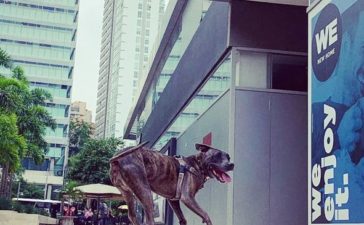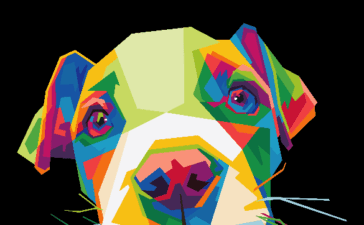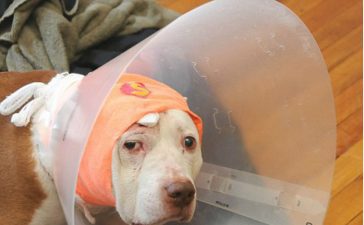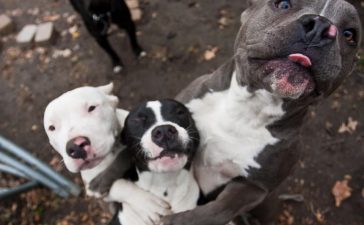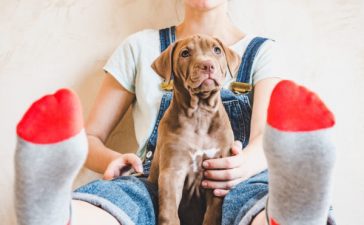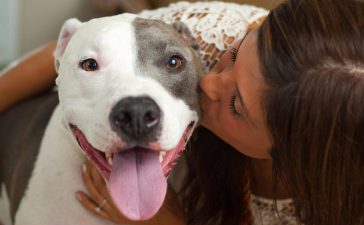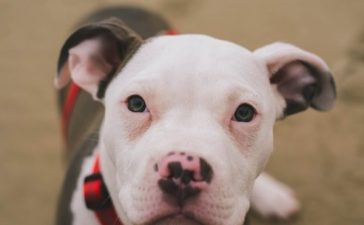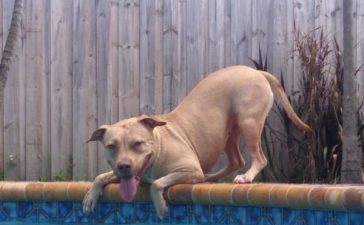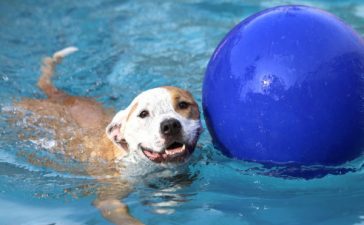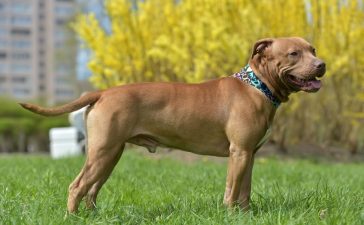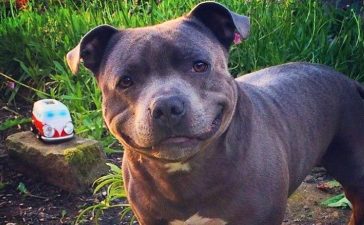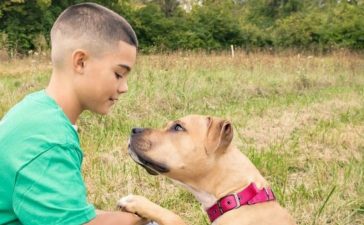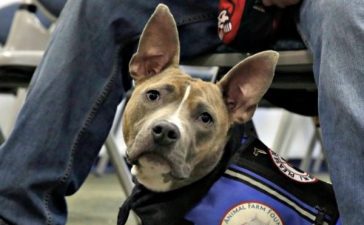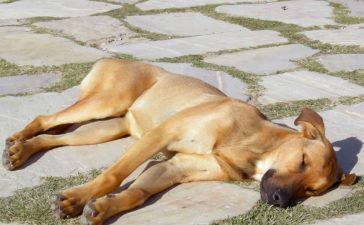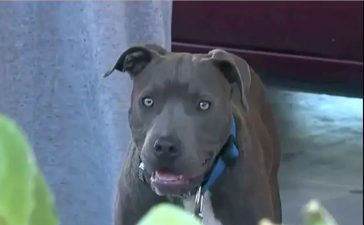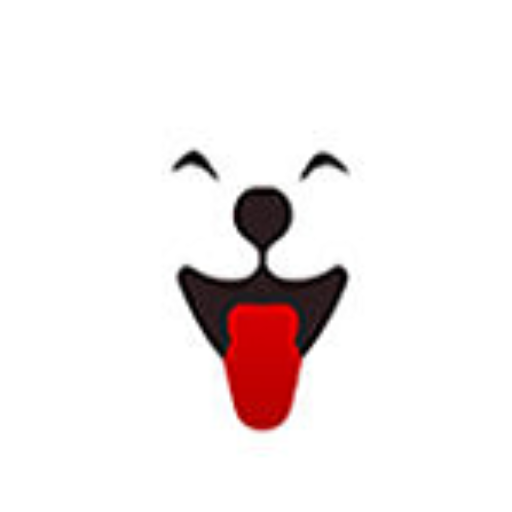When talking about Pit Bulls, there’s one important thing to keep in mind; Pit Bull isn’t a specific breed. Unless you’re referring to the American Pit Bull Terrier, that is. Pit Bulls not only come in many different large breeds, but also many color varieties. While their markings are similar across breeds with little differences in each, Pit Bull colors vary, including brindle, spotted, and solid, sometimes even merle.
Rednose and bluenose
No one dog’s markings are the same, so many Pit Bulls can have different markings and color patterns, despite being in the same litter. Bluenose and Rednose, for instance, aren’t separate breeds, but rather different Pit Bull colors of the same dog. Bluenose will typically have a gray/blue nose as well as gray/blue fur with white markings, but even here, their colors can vary. A blue litter may have dark or light eyes, and they can also come in brindle or fawn colors. Brindle blue Pit Bulls usually have a tan or brown variation with dark contrast. Bluenoses will even have gray/blue tones to their eyes and toenails.
Rednoses usually come in red, fawn, brown, and brindle colors. Their noses are not dark or light, but reddish-brown, as the name suggests. Some more trending Pit Bull colors are the white accent-markings on their head, chest, feet, and tail. Red patterns vary in solid, spotted, and brindle, as well as with white or black masks. In order to achieve these desired Pit Bull colors, red noses are generally bred with rednoses, just like bluenoses are bred with bluenoses. That said, they are also quite rare, which means they tend to fetch a higher price than other color variations.
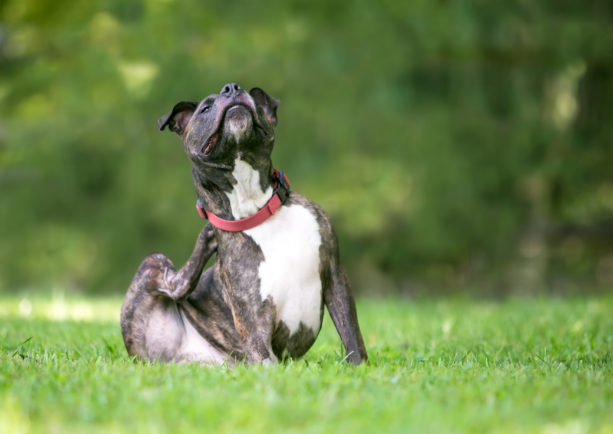

The tricolor Pit Bull
Tricolor is another very rare type of Pit Bull coloring. Their markings sometimes resemble those of a Rottweiler, but with a wider spectrum of colors. Breeders have been developing several different variations, including colors like black, white, tan, chocolate, fawn, lilac, blue, and red. Basically, it involves all the Pit Bull colors that already occur across the different breeds. The difference with the tricolor type is that there are three colors at the same time, rather than just one or two.
The most common tricolor combination is black, brown, and white. But breeding tricolor Pit Bulls is still a pretty new endeavor, so more variations are constantly showing up. A tricky thing is that the gene that creates this three-color coat is a recessive one, which means that both parents need to have it in order to have tricolor pups. And aside from the rarity of this, breeding in this way is often considered risky by professional breeders, since breeding dogs with recessive genes can also increase the chances of disease and genetic disorders. Worth mentioning, though, is that much like the merle variation of Pit Bull colors, tricolor is not yet acknowledged by the American Kennel Club. So while your pittie might be the greatest dog on earth, getting your tricolor dog into shows is not going to happen.
A lovely mix of Pit Bull colors
Pit Bull colors come in a rainbow of variations and markings, with unique patterns across multiple breeds. The breeds themselves are beautiful, loving animals, and their colors could maybe even be seen as representative of their wonderful personalities. No matter how you see it, there is undoubtedly a huge variety to choose from.



